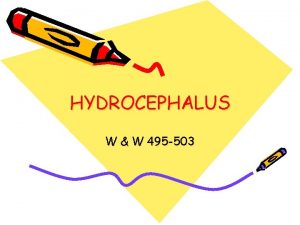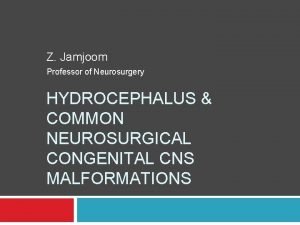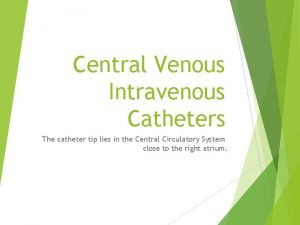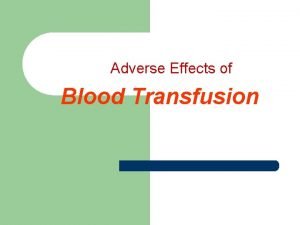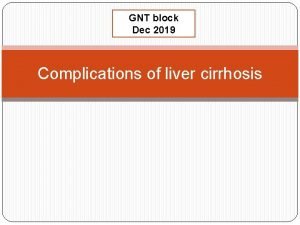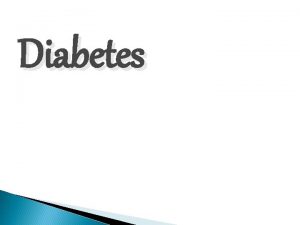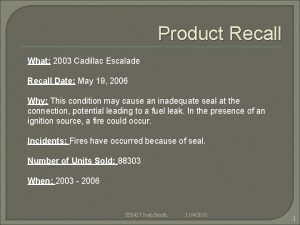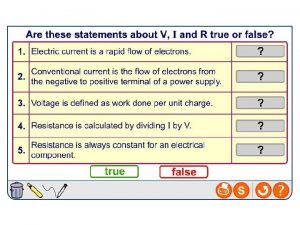Intraoperative Recall Allison Russell Intraoperative Recall Unintended complication















- Slides: 15

Intraoperative Recall Allison Russell

Intraoperative Recall • Unintended complication, occurs during general anesthesia or MAC • Occurs most during maintenance of anesthesia rather than induction or emergence • 1 -2 adult patients per 1000 patients undergoing general anesthesia • 1 in 100 patients in high-risk surgeries (cardiovascular, obstetrics, trauma)

Intraoperative Recall • Awake Movie Clip alternate link • Harold, Joby (Director). (2007). Awake [Motion picture]. United States: MGM Distribution Company.

Risk Factors • MAC 0. 3 -0. 4 associated with awakening from anesthesia • Mistake or failure in anesthesia delivery • Anesthetic technique resulting in inadequate anesthesia • Underappreciated patient dosing requirements • Patient condition unsafe to administer sufficient anesthesia

MAC • Minimum Alveolar Concentration • 50% of patients will not respond to a painful stimulus • MAC-awake: 50% of persons will follow command to “open your eyes”. o 0. 3 -0. 4 MAC associated with awakening from anesthesia. ~1/3 MAC=loss of recall • MAC-BAR: exceeds requirements for ablation of skeletal muscle movement with surgical stimuli. o 1. 3 MAC of any volatile agents

MAC Requirements • Decreased MAC: o o o o Increasing age Opioids/benzo use Sedative-hypnotics Alpha-2 agnoists Hypothermia Anemia Nitrous Oxide Acute ETOH intoxication Increased MAC *Decreased age (infants) * Hyperthermia * Hyperthyroidism * Cocaine * MAOIs * Chronic ETOH abuse * Hypernatremia

Repercussions • PTSD associated with awareness during surgery • Increases patient’s apprehension to undergo further surgery • Sleep disturbance, nightmares, anxiety

BIS Monitor • • Bispectral Index Represents a numerical value (0 -100) Correlated with the patient’s current hypnotic state 100=awake 65 -85=sedated 40 -65=general anesthesia <40=cortical suppression BIS monitor approved in 1996 by FDA as potential tool to decrease intraoperative awareness

Michigan Awareness Control Study • One group: BIS monitoring during surgery, anesthesia providers alerted when BIS values reached greater than 60 • Second group: anesthesia provider alerted when MAC reached 0. 5

Michigan Awareness Control Study • BIS monitor revealed trend toward reducing incidence of awareness • No statistically significant difference in intraoperative awareness between 2 groups • Increased alerting of anesthesia providers to potential “light” anesthesia was associated with fewer awareness events

Prevention • • • Check all equipment, drugs and dosages Administer amnestic premedication Avoid using muscle relaxants if possible Administer at least 0. 5 -0. 7 MAC Set alarm for low MAC

Treatment • Brice Questionnaire o “What was the last thing you remember before going to sleep? ” o “Did you dream during your procedure? ” • Prompt referral to mental health professional • Explain what happened to patient • Keep record of incident in patient’s chart to guide further anesthesia • Report claim to hospital lawyer

Conclusion • BIS monitor can be used as adjunct to detecting possibility of awareness • Evaluate patient for risk factors • Ensure patient has sufficient anesthesia and remains deep • Proper post-op follow-up • Vigilance is best prevention!!!

References • American Association of Nurse Anesthetists (2012). Anesthesia awareness during general anesthesia. Retrieved from: http: //www. aana. com/resources 2/professionalpractice/Pages/Con-Anesthesia-Awareness-during-General-Anesthesia. aspx • Avidan, M. S. & Mashour, G. A. (2013). Prevention of intraoperative awareness with explicit recall. Anesthesiology, 118 (2), 449 -456. • Butterworth IV J. F. , Mackey D. C. , Wasnick J. D. (2013). Chapter 8. Inhalation Anesthetics. In J. F. Butterworth IV, Mackey, J. D. Wasnick, D. C. (Eds), Morgan & Mikhail's Clinical Anesthesiology, 5 e. Retrieved October 31, 2013 from http: //www. accessmedicine. com. proxy. kumc. edu: 2048/content. aspx? • Butterworth IV J. F. , Mackey D. C. , Wasnick J. D. (2013). Chapter 54. Anesthetic Complications. In J. F. Butterworth IV, Mackey, D. C. , Wasnick, J. D. (Eds), Morgan & Mikhail's Clinical Anesthesiology, 5 e. Retrieved October 31, 2013 from http: //www. accessmedicine. com. proxy. kumc. edu: 2048/content. aspx? a. ID=57239722. • • Ghoneim, M. M. (2000). Awareness during anesthesia. Anesthesiology, 92(2), 597 -602. Mashour, G. A. , Shanks, A. , Tremper, K. K. , Kheterpal, S. , Turner, C. R. , Ramachandran, S. K. , …Avidan, M. S. (2012). Prevention of intraoperative awareness with explicit recall in an unselected surgical population: a randomized comparative effectiveness trial. Anesthesiology, 117(4), 717 -725. • • Naglehout, J. J. , & Plaus, K. L. (2014). Nurse anesthesia. St. Louis, Missouri: Elsevier Sanders. Harold, Joby (Director). (2007). Awake [Motion picture]. United States: MGM Distribution Company.

Questions
 Intraoperative cholangiogram
Intraoperative cholangiogram Role of nurse in intraoperative care ppt
Role of nurse in intraoperative care ppt Pre-operative phase
Pre-operative phase Operative cholangiography
Operative cholangiography Fluothane
Fluothane Unintended consequences
Unintended consequences Unintended consequences
Unintended consequences Dandy walker syndrome
Dandy walker syndrome Complication of hydrocephalus
Complication of hydrocephalus Complication of blood transfusion
Complication of blood transfusion Groshung
Groshung Complication of parenteral nutrition
Complication of parenteral nutrition Diabetic foot
Diabetic foot The pyramid principle summary
The pyramid principle summary Blood loss
Blood loss Complication of liver cirrhosis
Complication of liver cirrhosis







